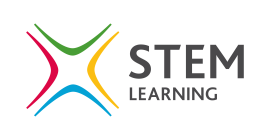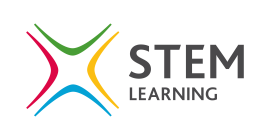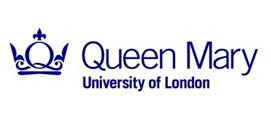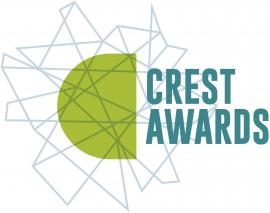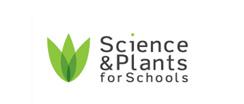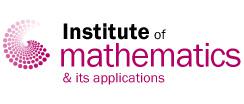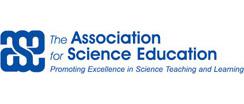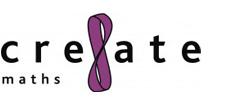STEM Resources
Aset of resources to support the development of STEM subjects in school
- ALL
- STEM Club
- Teacher guidance
- Experiment
- Information sheet
- Activity sheet
- External link
- Other
STEM Club
Design a sports glove
In this resource, students design a new glove for use in a sport of their choice. Students may find it helpful to talk with local people who partake in their chosen sport. The P.E. Department may be able to suggest suitable contacts.
A selection of tests, activities and factsheets are available for the students to use. They must decide what are the most important properties to include in the design of their glove. Students can then choose what activities and research to do accordingly. They may also think of their own experiments or research to carry out, as well as exploring the aesthetic aspects of design.
Curriculum links include: properties of materials, abrasion resistance, colour fast, dyeing, fabric friction and grip, gloves for protection, lightweight fabric, shrinking, tensometer, water repellant fabrics, waterproof fabrics, wetting, washing and drying, designing and making, creativity, critical evaluation, design, make and evaluate task, sport science, iterative processes, prototypes.
Wetsuits for paratriathletes
This challenge is an opportunity for students to explore, experiment and innovate whilst designing a specialised wetsuit for paratriathletes.
Paratriathletes need specialised equipment to allow them to compete. Whilst the development in technology of prosthetic limbs, racing wheelchairs and handcycles has been substantial, no such developments have been made with wetsuits for paratriathletes. At the moment, paratriathletes have to adapt their wetsuits themselves. They splint their legs by inserting poles inside the wetsuit. They strap their legs to keep them together. Some even stitch the legs of the wetsuit together.
The factsheets provide information that the students may find helpful when planning what to do and developing their design ideas. The information may help the students to decide what the most important properties are to include in the design of their wetsuit. They also provide some suggestions for tests and activities (buoyancy and streamlining factsheets).
Curriculum links: buoyancy, streamlining, materials, mass, weight, force and pressure, density.designing and making, creativity, critical evaluation, design, make and evaluate task, sport science, iterative processes, prototypes.
Develop a new sports venue
This resource requires students to consider the challenges of designing and developing a new sports venue. To make this challenge more manageable, it has been divided into four separate challenges: the site, the structure, the court and the environment.
As well as researching and developing ideas, the challenge is an opportunity for students to explore, experiment and innovate. For each challenge, a selection of relevant test procedures and factsheets are available which provide some information and guidance, but teams may wish to undertake further research of their own.
Curriculum links include: properties of materials, composites, energy, heat transfer, thermal insulation, microbes, light, structural design, designing and making, creativity, critical evaluation, design, make and evaluate task, sport science, iterative processes, prototypes.
Maths and science challenge 2012
This challenge asks teams of students to plan a major sporting event in their local area. The resource provides an opportunity for students to explore their ideas in a creative environment. Teams can define their own goals and priorities, but may want to focus on three main areas of planning an event:
• Choosing a sport and a venue or location
• Infrastructure and accessibility
• Sustainability and legacy
There is a factsheet accompanying each of these three key areas to provide support and information for the challenge.
Teacher guidance
Computers and maths in space
Mathematics plays a vital part in space flight, it gives us a way both to predict what should happen in the future and also ways to measure what’s actually happening in the present, and adapt to it. In this resource we look at a few places where maths helps in space flight. The maths is made simple here (it’s far, far more complicated in reality), but the exercises will help students explore basic ideas and get a feel for the significance of maths in space.
The lesson is structured in activity sections
• Maths tools - covers basic maths ideas in accelerometers and GPS
• Getting up – a maths activity related to docking at the ISS
• Getting down – a maths activity related to re-entry of the capsule
Each activity uses simple maths ideas and hands on calculations but set in an engaging context of space exploration.
Manual of mathematical magic
Many of the most powerful magical effects performed today have a mathematical basis. Mathematics is also the secret behind the technologies people use, the products they buy and the jobs they will have. This book shows how to perform some magic tricks, explains the mathematics behind them and how that same mathematics is used in the real world. All the tricks are self-working, which means there is no need to know any clever sleight of hand. The magic uses a whole range of mathematical ideas that you may already have come across, from simple addition and subtraction, to prime numbers, geometry, algebra and statistics. The intention of this book is to show that all of maths can be exciting, magical and useful.
Success in Science: Does It Add Up?
Successful scientists require a broad range of skills and attributes in order to achieve, and have recognition of, their successes. Central and pivotal to these skills is the mastery of number and a proficiency in mathematics. In science lessons students frequently rely on these mathematical skills but when out of the confines of a mathematics classroom and in a different context, find difficulty in demonstrating them suitably.
Teachers from Heaton Manor School, Newcastle Upon Tyne, focussed on a targeted group of students in order to nurture and develop the mathematical skills they are most likely to employ to become successful scientists. In doing so they considered the role staff can play in orchestrating and collaboratively planning activities to develop these skills.
Science staff wanted to place a greater emphasis on key mathematical operations whilst the mathematics staff were more interested in gaining a context for the mathematical concepts thereby making some activities more relevant to students by working with real data.
Mathematics and Science Departments Working Collaboratively
Cross-curricular work can be incredibly powerful, both in terms of student outcomes and staff Continuing Professional Development. However, it is easy to contemplate, but far more difficult to deliver. Effective planning is the key. At King James’s School, near Huddersfield, members of the mathematics and science departments worked collaboratively to prepare a ‘rockets’ project which was delivered jointly on one of the school’s cross-curricular days, and followed up in subsequent mathematics lessons to provide a high quality and enjoyable learning experience for staff and students alike.
CREST Awards: thirty inspirational ideas
30 inspirational ideas for science gathers some of the best STEM ideas from the last 30 years, some of which are CREST projects, some of which are just great ideas. The main themes of the activities are:
• Interacting with researchers
• Mixing science and art
• Creating new media
• Using ICT
• Getting hands-on
• Learning outside the classroom
Many of the activities in this booklet can count towards CREST Awards.
Experiment
Plant disease practicals: powdery mildew
In this practical and data analysis activity, students collect samples of leaves showing samples of infection with powdery mildew; the samples can be sent for analysis as part of the Powdery Mildew Survey citizen science project. Students analyse data from the survey at the end of this activity.
Inside STEM careers: investigating organic foods
Produced by Science & Plants for Schools (SAPS), these materials look at the work of product manager, James Seymour. Through investigating organic food crops and horticulture, students gain a greater understanding of the career opportunities available in plant biology.
James is a manager in a herb growing company and uses his knowledge of plant science to choose the plants that they grow and sell.
The materials include full teacher guidance and student information sheets. These cover:
* careers case study and questions
* investigating if foods grown organically taste better than non-organic
* 'Thanet Earth' as an example of a giant greenhouse, growing food crops and the effects of intensive farming
* considering the factors that affect the saleability and profitability of crops
Information sheet
Keeping hearts pumping
This Mathematics Matters case study, from the Institute of Mathematics and its Applications, looks at how mathematics modelling can aid investigations into the circulatory system. Blood-related diseases can seriously harm patients’ quality of life and even lead to death. Many of these diseases are caused by problems with the flow of blood in the body, and using mathematical models to understand how and why these occur can help save lives. The resource can be used by teachers to guide their students or shared directly with students to inform them about careers using mathematics.
Activity sheet
Science EXTRA! Using Newspapers in the Science Classroom
This resource, called Science EXTRA! Using Newspapers in the Science Classroom, was written by Ruth Jarman and Billy McClune, Graduate School of Education, Queen's University Belfast and has been provided by the Association for Science Education (ASE). The aims of the Newspaper in Science Education group are to:
*Encourage young people to read about science in newspapers
*Empower young people to engage critically with the science they read in newspapers
*The teachers' notes suggest how newspapers can be used in the science classroom, and to help get you started they come with four illustrative examples for you to use.
External link
Future Morph
STEM Careers and guidance
Future Morph
This site has been designed to show young people that science and maths related subjects can equip them with the skills and knowledge they need to make them employable in the future job market, whether they become scientists or engineers, or move into other areas of employment.
Nrich resources to support STEM clubs
Each of these resources provides enough material for up to half a term for a STEM club. Most are aimed at students aged 10 to 14, and they are intended to provide a mix of ideas accessible to all students who choose to attend, while not forgetting those who need an extra challenge.
These resources are fun for students, but also help them to integrate what they learn in maths, science and technology lessons.
Students could also use these resources for a CREST award from the British Science Association.
Go4set
EDT’s Go4SET project is typically 10 weeks and offers young people age 12-14 the opportunity to develop skills, inform subject choice and change perceptions about STEM, raising awareness of how studying these subjects can lead to a rewarding career.
STEM lessons and resources for educators
Teachers TryScience is a web site for teachers. This site provides free and engaging lessons, along with teaching strategies and resources, which are designed to spark students’ interest in science, technology, engineering and math (STEM). What’s more, the site features collaboration tools to enable teachers to discuss and share effective instructional practices.
Stemettes
Support for engaging girls in STEM careers
Wise campaign
WISE inspires girls and women to study and build careers using science, technology, engineering and maths (STEM)
Thei stated mission is to get 1 million more women in the UK STEM workforce. They want to work collaborativley to boost the talent pool from classroom to boardroom and drive economic growth.
Commonwealth Science Class
The British Council have developed a series of resources, in partnership with The Royal Society, to enhance science learning in schools.
The materials in this pack will encourage young people around the world to take part in experimental science investigations and consider some of the long term global problems that scientists are working on, but have not yet solved.
The pack consists of four exciting units that develop knowledge, skills and principles from across the scientific disciplines. Each unit includes a short film about the theme featuring an eminent expert and local school children, and questions for discussion and debate. The units will be made available over the course of the year as follows:
Science Capital You Tube
What is Science Capital? And why does it matter?
This animation explains the compelling concept originally developed by King’s Professor Louise Archer and her team.
King’s College London, the Science Museum and BP are working together on the Enterprising Science project to build young people’s science
Polar explorer STEM project
In 2014 the Government announced a £200 million investment for a new polar research ship. The RRS Sir David Attenborough will enable world-leading research in Antarctica and the Arctic for the next 25 years.
Fully equipped with the latest instrumentation for the purposes of carrying out research in polar-regions, this vessel will have improved ice strengthened capability and greater endurance over existing polar research vessels. This will enable scientists and technicians to stay at sea for longer and study the polar environments during the Antarctic and Arctic summer months. It will also serve as a logistic support vessel for BAS research stations.
A state-of-the-art robotic subsea vehicle named Boaty McBoatface will be on board RRS Sir David Attenborough and will allow scientists to gather data remotely from places where humans are unable to go.
We are working with NERC, British Antarctic Survey (BAS) and others to use this historic occasion to inspire the next generation of scientists and engineers. We hope to use the build, launch and operation of RRS Sir David Attenborough and Boaty McBoatface to engage young people in science, enable them to understand the scientific process and enhance their understanding of STEM (science, technology, engineering and mathematics) concepts.
Crest Award resources
We are calling on students to come up with innovative answers to contemporary challenges in global health and development, and develop creative solutions that have the potential to change the world.
Crest award enrich my classroom
The Nnrich My Classroom resource pack forms a step-by-step guide to running a Discovery Day and is suitable to run with one class, a science club, or with a whole year group.
The aim of the day is for students to learn about a range of different science, engineering and technology topics through group work, interactive activities, and a challenge that asks them to consider how they can enrich their experience in the classroom in the future.
Six week STEM club projects
If you'd love to run a STEM Club but the thought of planning a new club activity for every week of the school year just seems like a bridge too far, then these Six Week STEM Club Programme could be the answer you've been looking for!
All About STEM RESOURCES
There are lots of resources all over the internet to help you plan effective STEM teaching. Here Here is a collection of some useful exameplse from All About STEM .
STEM Clubs activities list
There is a vast array of STEM-related activity resources that are suitable for use in a STEM Club setting. Some organisations have also developed specific resources for clubs, but what you want to do will depend on the STEM subject, length of time and other factors, such as working with a STEM Ambassador.
The activities outlined here are divided into long, short and one-off activities.
- One-off activities are completed in one session. They are often highly engaging and can have a real wow factor.
- Short projects are any activity that takes club members two to three sessions to complete. Many of the shorter projects will include demonstrations or experiments that can be used as one-off activities.
- Long projects are activities that take half a term or more to complete and might be considered a long project. Completing a long project can be very rewarding, especially if there is an award or a prize involved.
Each activity is categorised as Science, Technology and Engineering, Maths, or Cross Curricular.
Cre8te maths
cre8ate maths was a CPD project for Yorkshire and Humber teachers of mathematics. It ran from April 2007 to March 2010. The programme of materials development was led by the Mathematics Education Centre and the materials have been enthusiastically received by teachers and advisers of mathematics across the country. The 57 units are now on the website - and they are free.
Motivate Disease
his research project took place over two consecutive schools years (2007-08 and 2008-09), and involved year 9 and 10 students from five UK secondary schools and their associated primary schools, the Disease Dynamics Research Team at the University of Cambridge and the Motivate Project, part of the Millennium Mathematics Project.
Motivate Avalanche
Investigating avalanches through experiments
Motivate Maths and our life
Go down deep enough into anything and you will find mathematics." Dean Schlicter
Biomedical science provides rich contexts for studying maths. Funding from the Wellcome Trust has enabled us to produce five resource packs based on topical issues in biomedical science which support and extend the maths curriculum at secondary level (11-16 year-olds). These packs show how maths underpins cutting edge biomedical research. They also introduce students to important ethical issues.
Each pack consists of short video clips in which an expert talks about their work and the topic. Additional resources - presentations, worksheets, games - help students to explore the topic in greater depth. There are also teacher's notes and worksheet answers for each pack.
Other
STEM Learning Magazine: Secondary
Published termly, the STEM Learning magazines bring together information, ideas and resources into three tailored editions (primary, secondary and post-16 and FE) to support teachers of science, mathematics, engineering, computing and design and technology. The magazine highlights resources and professional development opportunities (including Impact Awards and ENTHUSE bursaries).
Study Plus Resources
This set of resources, Study Plus, from the National Strategies is an intervention programme for Key Stage Four students that was designed to raise standards at GCSE, principally in English and mathematics, but also in other GCSE subjects by improving literacy, numeracy and learning in general.
As an approach, Study Plus was intended to help schools to move towards more personalised learning for students and is entirely consistent with the recommendations of the report of the Teaching and Learning in 2020 Review Group (2020 Vision, DfES, January 2007).
Study Plus in mathematics was designed to give teachers and students the opportunity to explore an idea or a topic in great detail, with few time constraints. The topics that appeared to work most successfully in the pilot span a range of curriculum areas and a range of mathematical objectives. Working within topics allowed students to make connections and develop skills that are transferable.
The resource consists of a handbook containing general guidance and ten sample Study Plus units which cover:

